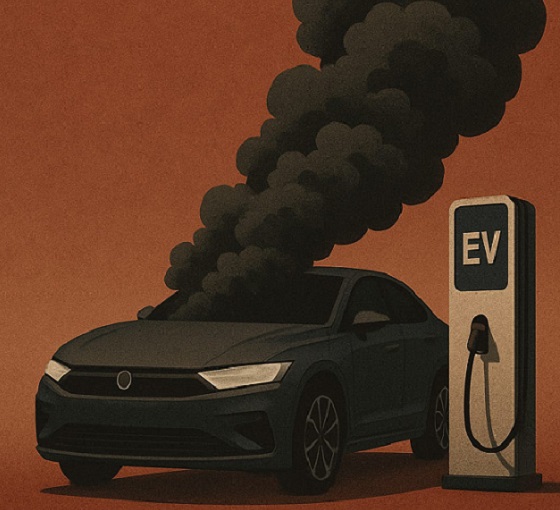Economy
Wrapping Up Canadian Energy 2023 – Prosperity, Power Struggles, Pipelines, EV Promises and “Pie in the Sky” Politics
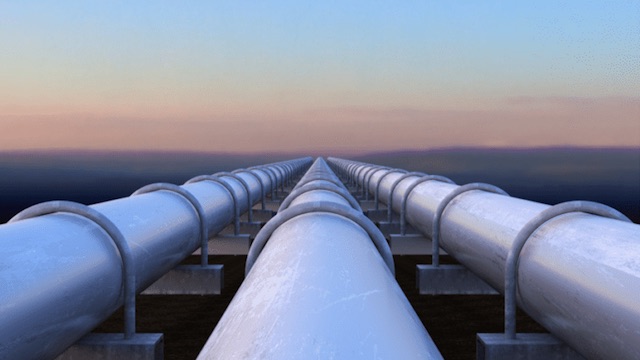
From EnergyNow Media
By Deidra Garyk
2023 was an optimistic year in the Canadian oil patch. The +15 walkway system in downtown Calgary has been buzzing with the energy of people hurrying to business meetings and networking events.
Some of those scurrying about were headed to talk multi-billion-dollar merger and acquisition (M&A) deals that the patch continued to experience throughout the year. Traditional oil companies also bought alternative energy and carbon tech companies. Carbon capture, utilization and storage (CCUS) was the investment decision of the year.
Oil and gas prices remained relatively high. Not great, but not in the toilet like the dark years of 2015 to 2021. That meant government coffers filled, easing some of the debt burden accumulated during COVID. Oil and gas companies, producers and the many service providers who support the production, were able to continue paying down debt and providing returns to patient shareholders.
Canadian majors Suncor, Cenovus, and Enbridge went through leadership changes at the top. I wish these men success and courage. They are going to need it to embolden pragmatism at all levels of government.
The Canadian federal government continues to be all-in on climate and green energy, seemingly to the exclusion of traditional, reliable energy sources. Although, since climate change has taken a backseat to affordability and energy security for the voting public – the only people politicians really care about – the Liberals have had to rebrand some programs to get buy-in.
One example is renaming the “Just Transition” the Sustainable Jobs Plan. Other than the name, not much has changed. There is still a push for unionized, non-oil and gas jobs.
The feds “invested” (their word, not mine) billions of dollars in EV battery plants, continuing to go all-in on 100 percent EV car sales in twelve years. Senior bureaucrats at Transport Canada even touted the nearness of EV heavy-duty commercial transportation and equipment. (Someone should tell them it will not work well in remote locations with no charging infrastructure.) Energy and Natural Resources Minister Jonathan Wilkinson lauded the day when agricultural equipment goes all electric, fantasizing about the economic boon that will bring. (Someone else should tell him it will not be experienced by farmers who have to spend their hard-earned dollars on equipment replacements.)
Joe Biden visited Ottawa in March. I happened to be there for a conference, so I got to experience the pomp and circumstance first-hand. I have never seen so much security, and I have travelled to places under military control and lived in a country that remains perpetually under the threat of foreign invasion.
Biden’s motorcade is a long, emissions-belching row of vehicles. I did not see any EVs. It includes two “Beasts” (one used as a decoy while the other transports the President), an ambulance, and several tricked-out SUVs. It is quite a spectacle.
As expected, topping the list of topics on the visit’s agenda, President Biden and Prime Minister Trudeau talked about energy and climate, as outlined in their joint statement.
Global sustainability reporting standards were released in June and come into effect January 1, 2024. Publicly traded companies are waiting for Canada to release jurisdiction-specific regulations to understand the magnitude of what will be required. In the Fall Economic Update, released November 22, the feds said rules will be put in place to extend mandatory climate reporting to private companies. That is a big hint at what all companies should expect, at a minimum.
You can listen to my podcast on the subject with energy analyst Dr. Tammy Nemeth here.
On the topic of climate, Bill S-243, An Act to enact the Climate-Aligned Finance Act and to make related amendments to other Acts passed second reading in the Senate in June. You may think this is just some boring Senate bill, but oil and gas boards and employees need to be aware of it.
The bill aims to restrict investment in hydrocarbons, forces companies to set climate commitments, and dictates who has to be part of a company’s board of directors. Worse, section 13(1) Appointment – restriction outlines who cannot be a board member – anyone who works in or owns shares in a fossil fuel company.
It goes as far as to include: “And whereas investment in energy efficiency, clean energy and clean technologies and the incentivization of innovation and behavioural change must replace investments in greenhouse-gas-emission-intensive activities for effective action against climate change.” It targets “fossil fuel activity” in the definition of “emissions-intensive activities”.
Alignment with climate commitments requires that companies:
- take into consideration vulnerable groups, communities and ecosystems, including the biodiversity of those ecosystems,
- make decisions based on equity and the best available science and
- do not promote, foster or exacerbate food insecurity or inequalities in society; and
- do not cause significant harm to social and environmental obligations recognized by Canada.
This bill should trouble any rational person, and it is not getting enough attention. It ramps up climate hysteria and enshrines it into all financial decision making. It is ideological to its core.
I encourage you to read the bill here.
Fortunately, two major, necessary egress projects – Coastal GasLink and Trans Mountain – are well underway before Bill S-243 can stop them. Coastal GasLink reached major milestones of 100 percent pipeline installation and mechanical completion, ahead of schedule. Unfortunately, the federally owned Trans Mountain pipeline has continued to experience delays and a cost increase to $30.9 billion. Although, it was about 80 percent complete in March and expected to be in service in the first quarter of 2024, the project has been delayed due to issues over the route and may not be completed until the end of 2024.
Canada’s summer wildfire season had environmental activists hot and bothered, blaming one thing, and one thing only – climate change!
Calgary hosted the 24th World Petroleum Congress and world energy leaders in September. The torch was passed on to Saudi Arabia to host next. Based on their booth, it will be an extravaganza that will undoubtedly proudly display their oil and gas development. Energy and Natural Resources Minister Jonathan Wilkinson dutifully kept to the Liberal’s script and was challenged to mention the words “oil” and “gas” during his speech at the World Petroleum Congress. This caused the ire of Alberta Premier Danielle Smith, who has had it with the feds’ attitude towards oil and gas.
She has now invoked the Alberta Sovereignty Act in an attempt to prevent the federal government from being able to enact the Clean Electricity Standard by 2035. She has taken a lot of heat for it, but Saskatchewan’s Premier Scott Moe did it first with the colloquially named Saskatchewan First Act. When adversarial Environment and Climate Change Canada Minister Steven Guilbeault threatened to criminalize the use of coal-fired power generation past 2030, Moe puffed out his chest and said, “come get me!”
For all the partisan naysayers attacking the Premiers, I recommend reading Electricity Canada’s response to the Clean Electricity Regulations. It is emotionless and objective, and it sides with the Premiers.
Good thing there is serious discussion about the electricity grid and reliability happening in the Edmonton Legislature because Alberta’s grid operator AESO has issued several warnings in the last year, on both hot and cold days. This has me impatiently waiting for the 2,700 megawatts of new natural gas-powered generation to come on in 2024.
November was all about the carbon tax fight. The feds doubled down on the importance of carbon taxes in the fight against global warming, but not in regions where their sitting MPs risk losing their seats (i.e. their jobs) in the next election. If you think it was not political, you are fooling yourself. They are still fighting over the applicability of a tax on farmers. As someone who eats, I would like it removed to keep the cost of food down.
Premier Moe will not charge Saskatchewan residents carbon tax on natural gas and electricity used to heat homes. This seems reasonable considering that it gets really, really, really cold in Saskatchewan for many days in the winter and reliable energy is a must.
In a hotter region of the world, Dubai, United Arab Emirates hosted COP28 in December. It is the twenty eighth UN climate conference, and yet we appear no closer to solving the thing they say is a crisis – rising emissions. The globe reached the height of emissions in 2023, even though coal use is down and renewable energy capacity and investment is up, up, up, according to the International Energy Agency.
As expected, Canada made various expensive pledges. Minister Guilbeault bounces to the podium for a photo op, drops a climate pledge or two, and the rest of us are left trying to figure out how to meet the commitment. The most contentious for Alberta and Saskatchewan was the oil and gas emissions cap that has been called a de facto production cap.
GEOPOLITICS
With energy security remaining a priority for citizens, nuclear is no longer a bad word. Countries and regions are expanding existing nuclear infrastructure and there is increasing public acceptance for small modular reactors. The false fear tactics used by the anti-nuclear activists have finally been shown for what they are – exaggerated and untrue.
The BRICS alliance expanded with the addition of six new members: Iran, Saudi Arabia, Egypt, Ethiopia, Argentina, and the United Arab Emirates.
Not only are the BRICS nations population and economic power players, they hold the keys to unlocking vast reserves of reliable energy. Total oil production from BRICS nations will be between 40-45 percent of global oil production, more than OPEC’s 35-40 percent. In addition, the members hold vast reserves of the minerals needed for any future energy transformation.
Forty other countries applied to join, demonstrating an interest in the group. Western leaders and NGOs would be wise to pay attention to the growing influence of the BRICS, even if they dislike some of the members.
BRICS is my geopolitical story of the year as it continues to disrupt global energy markets. In 2022, India increased purchases of discounted Russian oil by forty percent. This year, India purchased oil from the United Arab Emirates in rupees, their local currency. These are two examples of the shifts that are happening but are seemingly ignored by the West.
Overall, it appears that pragmatism and realism are influencing political energy decisions, and 2024 is expected to be another positive year for the Canadian oil patch.
All the best for the new year. May you enjoy peace and prosperity.
About Deidra Garyk
Deidra Garyk has been working in the Canadian energy industry for almost 20 years. She is currently the Manager, ESG & Sustainability at an oilfield service company. Prior to that, she worked in roles of varying seniority at exploration and production companies in joint venture contracts where she was responsible for working collaboratively with stakeholders to negotiate access to pipelines, compressors, plants, and batteries.
Outside of her professional commitments, Deidra is an energy advocate and thought leader who researches, writes, and speaks about energy policy and advocacy to promote balanced, honest, fact-based conversations.
Business
Ottawa Pretends To Pivot But Keeps Spending Like Trudeau

From the Frontier Centre for Public Policy
New script, same budget playbook. Nothing in the Carney budget breaks from the Trudeau years
Prime Minister Mark Carney’s first budget talks reform but delivers the same failed spending habits that defined the Trudeau years.
While speaking in the language of productivity, infrastructure and capital formation, the diction of grown-up economics, it still follows the same spending path that has driven federal budgets for years. The message sounds new, but the behaviour is unchanged.
Time will tell, to be fair, but it feels like more rhetoric, and we have seen this rhetoric lead to nothing before.
The government insists it has found a new path, one where public investment leads private growth. That sounds bold. However, it is more a rebranding than a reform. It is a shift in vocabulary, not in discipline. The government’s assumptions demand trust, not proof, and the budget offers little of the latter.
Former prime ministers Jean Chrétien and Paul Martin did not flirt with restraint; they executed it. Their budget cuts were deep, restored credibility, and revived Canada’s fiscal health when it was most needed. Ottawa shrank so the country could grow. Budget 2025 tries to invoke their spirit but not their actions. The contrast shows how far this budget falls short of real reform.
Former prime minister Stephen Harper, by contrast, treated balanced budgets as policy and principle. Even during the global financial crisis, his government used stimulus as a bridge, not a way of life. It cut taxes widely and consistently, limited public service growth and placed the long-term burden on restraint rather than rhetoric. Carney’s budget nods toward Harper’s focus on productivity and capital assets, yet it rejects the tax relief and spending controls that made his budgets coherent.
Then there is Justin Trudeau, the high tide of redistribution, vacuous identity politics and deficit-as-virtue posturing. Ottawa expanded into an ideological planner for everything, including housing, climate, childcare, inclusion portfolios and every new identity category.
The federal government’s latest budget is the first hint of retreat from that style. The identity program fireworks are dimmer, though they have not disappeared. The social policy boosterism is quieter. Perhaps fiscal gravity has begun to whisper in the prime minister’s ear.
However, one cannot confuse tone for transformation.
Spending still rises at a pace the government cannot justify. Deficits have grown. The new fiscal anchor, which measures only day-to-day spending and omits capital projects and interest costs, allows Ottawa to present a balanced budget while still adding to the deficit. The budget relies on the hopeful assumption that Ottawa’s capital spending will attract private investment on a scale economists politely describe as ambitious.
The housing file illustrates the contradiction. New funding for the construction of purpose-built rentals and a larger federal role in modular and subsidized housing builds announced in the budget is presented as a productivity measure, yet continues the Trudeau-era instinct to centralize housing policy rather than fix the levers that matter. Permitting delays, zoning rigidity, municipal approvals and labour shortages continue to slow actual construction. These barriers fall under provincial and municipal control, meaning federal spending cannot accelerate construction unless those governments change their rules. The example shows how federal spending avoids the real obstacles to growth.
Defence spending tells the same story. Budget 2025 offers incremental funding and some procurement gestures, but it avoids the core problem: Canada’s procurement system is broken. Delays stretch across decades. Projects become obsolete before contracts are signed. The system cannot buy a ship, an aircraft or an armoured vehicle without cost overruns and missed timelines. The money flows, but the forces do not get the equipment they need.
Most importantly, the structural problems remain untouched: no regulatory reform for major projects, no tax-competitiveness agenda and no strategy for shrinking a federal bureaucracy that has grown faster than the economy it governs. Ottawa presides over a low-productivity country but insists that a new accounting framework will solve what decades of overregulation and policy clutter have created. The budget avoids the hard decisions that make countries more productive.
From an Alberta vantage, the pivot is welcome but inadequate. The economy that pays for Confederation receives more rhetorical respect, yet the same regulatory thicket that blocks pipelines and mines remains intact. The government praises capital formation but still undermines the key sectors that generate it.
Budget 2025 tries to walk like Chrétien and talk like Harper while spending like Trudeau. That is not a transformation. It is a costume change. The country needed a budget that prioritized growth rooted in tangible assets and real productivity. What it got instead is a rhetorical turn without the courage to cut, streamline or reform.
Canada does not require a new budgeting vocabulary. It requires a government willing to govern in the country’s best interests.
Marco Navarro-Genie is vice-president of research at the Frontier Centre for Public Policy and co-author with Barry Cooper of Canada’s COVID: The Story of a Pandemic Moral Panic (2023).
Daily Caller
Paris Climate Deal Now Decade-Old Disaster


From the Daily Caller News Foundation
By Steve Milloy
The Paris Climate Accord was adopted 10 years ago this week. It’s been a decade of disaster that President Donald Trump is rightly trying again to end.
The stated purpose of the agreement was for countries to voluntarily cut emissions to avoid the average global temperature exceeding the (guessed at) pre-industrial temperature by 3.6°F (2°C) and preferably 2.7°F (1.5°C).
Since December 2015, the world spent an estimated $10 trillion trying to achieve the Paris goals. What has been accomplished? Instead of reducing global emissions, they have increased about 12 percent. While the increase in emissions is actually a good thing for the environment and humanity, spending $10 trillion in a failed effort to cut emissions just underscores the agreement’s waste, fraud and abuse.
As a nonprofit, we are dependent on the generosity of our readers.
Please consider making a small donation of any amount here.
Thank you!
But wasting $10 trillion is only the tip of the iceberg.
The effort to cut emissions was largely based on forcing industrial countries to replace their tried-and-true fossil fuel-based energy systems with not-ready-for-prime-time wind, solar and battery-based systems. This forced transition has driven up energy costs and made energy systems less reliable. The result of that has been economy-crippling deindustrialization in former powerhouses of Germany and Britain.
And it gets worse.
European nations imagined they could reduce their carbon footprint by outsourcing their coal and natural gas needs to Russia. That outsourcing enriched Russia and made the European economy dependent on Russia for energy. That vulnerability, in turn, and a weak President Joe Biden encouraged Vladimir Putin to invade Ukraine.
The result of that has been more than one million killed and wounded, the mass destruction of Ukraine worth more than $500 billion so far and the inestimable cost of global destabilization. Europe will have to spend hundreds of billions more on defense, and U.S. taxpayers have been forced to spend hundreds of billions on arms for Ukraine. Putin has even raised the specter of using nuclear weapons.
President Barack Obama unconstitutionally tried to impose the Paris agreement on the U.S. as an Executive agreement rather than a treaty ratified by the U.S. Senate. Although Trump terminated the Executive agreement during his first administration, President Joe Biden rejoined the agreement soon after taking office, pledging to double Obama’s emissions cuts pledge to 50 percent below 2005 levels by 2030.
Biden’s emissions pledge was an impetus for the 2022 Inflation Reduction Act that allocated $1.2 trillion in spending for what Trump labeled as the Green New Scam. Although Trump’s One Big Beautiful Bill Act reduced that spending by about $500 billion and he is trying to reduce it further through Executive action, much of that money was used in an effort to buy the 2024 election for Democrats. The rest has been and will be used to wreck our electricity grid with dangerous, national security-compromising wind, solar and battery equipment from Communists China.
Then there’s this. At the Paris climate conference in 2015, U.S. Secretary of State John Kerry stated quite clearly that emissions cuts by the U.S. and other industrial countries were meaningless and would accomplish nothing since the developing world’s emissions would be increasing.
Finally, there is the climate realism aspect to all this. After the Paris agreement was signed and despite the increase in emissions, the average global temperature declined during the years from 2016 to 2022, per NOAA data.
The super El Nino experienced during 2023-2024 caused a temporary temperature spike. La Nina conditions have now returned the average global temperature to below the 2015-2016 level, per NASA satellite data. The overarching point is that any “global warming” that occurred over the past 40 years is actually associated with the natural El Nino-La Nina cycle, not emissions.
The Paris agreement has been all pain and no gain. Moreover, there was never any need for the agreement in the first place. A big thanks to President Trump for pulling us out again.
Steve Milloy is a biostatistician and lawyer. He posts on X at @JunkScience.
-

 Alberta2 days ago
Alberta2 days agoCanada’s New Green Deal
-

 Business2 days ago
Business2 days agoCanada’s recent economic growth performance has been awful
-

 armed forces2 days ago
armed forces2 days agoOttawa’s Newly Released Defence Plan Crosses a Dangerous Line
-

 Alberta1 day ago
Alberta1 day agoAlberta’s huge oil sands reserves dwarf U.S. shale
-
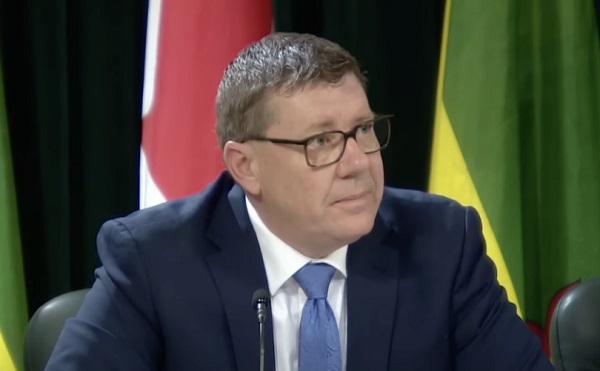
 Health1 day ago
Health1 day agoSaskatchewan woman approved for euthanasia urged to seek medical help in Canada rather than US
-
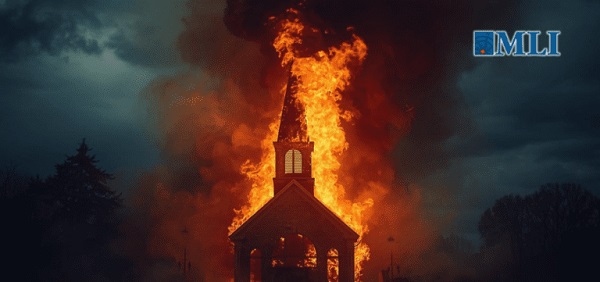
 Indigenous1 day ago
Indigenous1 day agoResidential school burials controversy continues to fuel wave of church arsons, new data suggests
-

 Health2 days ago
Health2 days agoCanadian gov’t considers sharing census data on gender-confused children
-
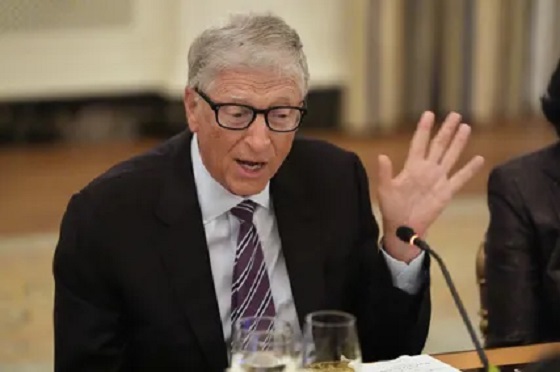
 Business2 days ago
Business2 days agoCOP30 finally admits what resource workers already knew: prosperity and lower emissions must go hand in hand






